Main menu
Common skin conditions

NEWS
Join DermNet PRO
Read more
Quick links
Author: Vanessa Ngan, Staff Writer, 2003. Updated by Chief Editor, A/Prof Amanda Oakley, January 2015.
Introduction
Demographics
Causes
Classification
Clinical features
Ichthyosis syndromes
Diagnosis
Complications
Treatment
Outlook
Ichthyosis is a disorder of cornification, characterised by persistently dry, thickened, 'fish scale' skin. There are at least 20 varieties of ichthyosis, including inherited and acquired forms.
Inherited types of ichthyosis may be congenital or have delayed onset.
Ichthyosis can also be due to a new spontaneous mutation.
Acquired ichthyosis appears in adult life. People with ichthyosis may have a systemic disease, such as:
Ichthyosis may be provoked by certain medications:
The inherited forms of ichthyosis occur as a result of genetic mutations that alter the appearance and behaviour of keratinocytes (skin cells) in the stratum corneum (the outer skin barrier layer). Studies have shown that there are inflammatory cells and cytokines in the Th17 pathway that contribute to symptoms and signs.
The cause of acquired ichthyosis is unknown.
Names and classification of ichthyoses are evolving with a greater understanding of the molecular causes of the diseases [1]. The mutated genes are shown in italics.
The common ichthyoses are:
This group has keratin mutations. The main types of keratinopathic ichthyoses are:
* Previously called epidermolytic hyperkeratosis or bullous ichthyosiform erythroderma
¶ Previously called ichthyosis bullosa Siemens
§ Previously called ichthyosis hystrix
There are many other rare types of ichthyosis with defined gene abnormalities and clinical features.
Ichthyosis varies in appearance and severity depending on the cause and the effect of modifying genes.
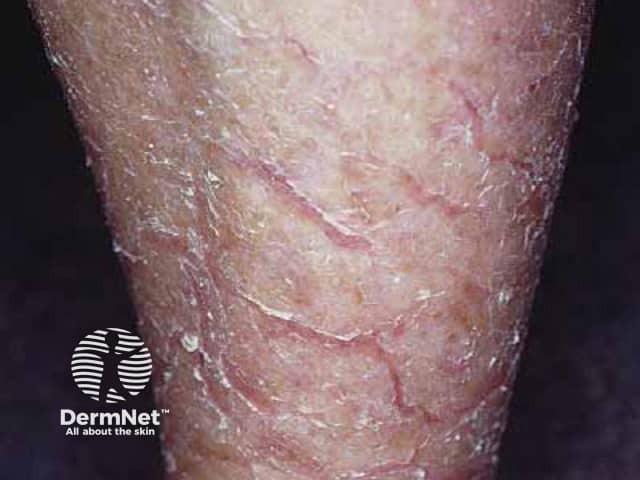
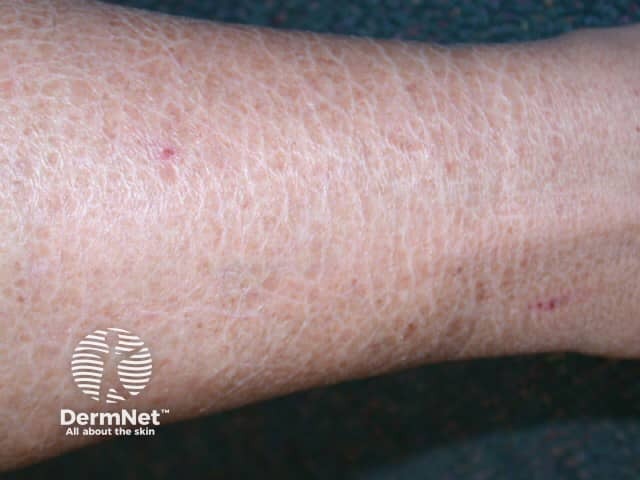


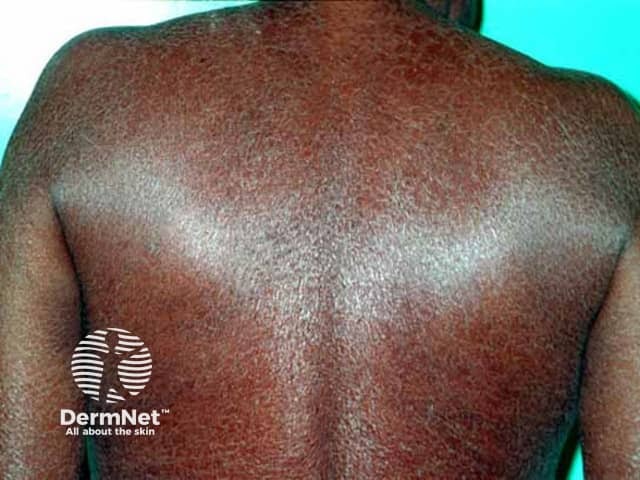
Kava ichthyosis
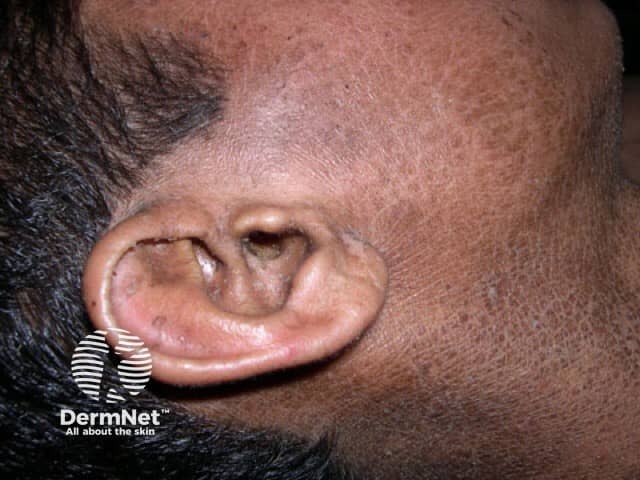
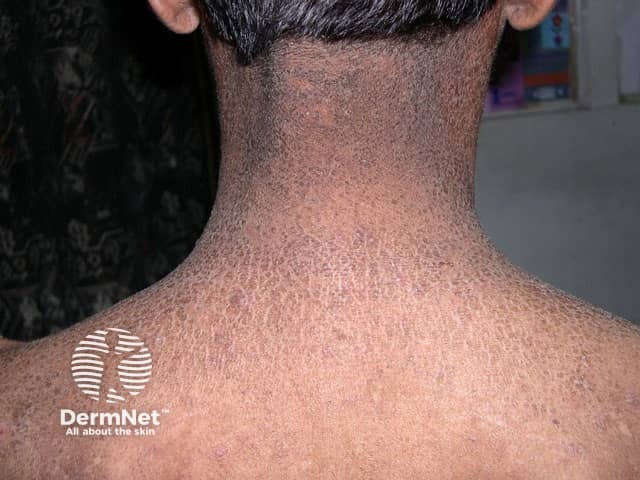
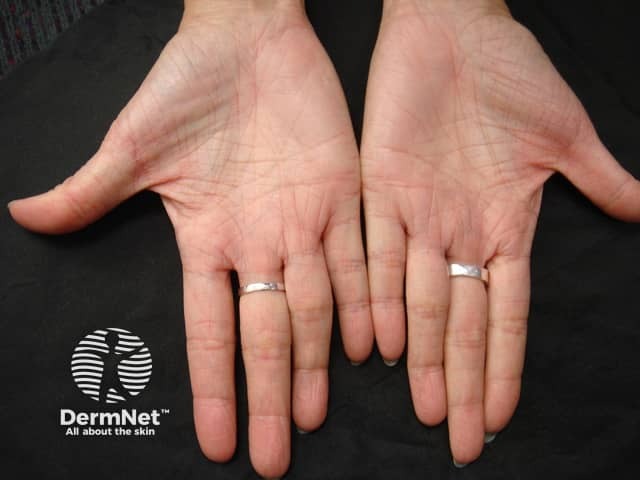
Ichthyosis vulgaris
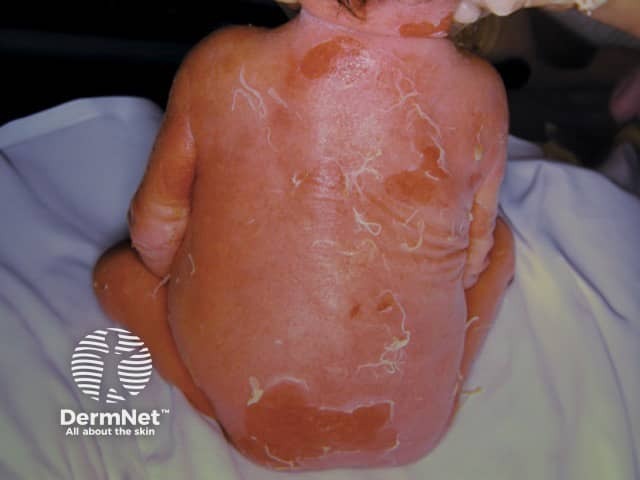
Epidermolytic ichthyosis
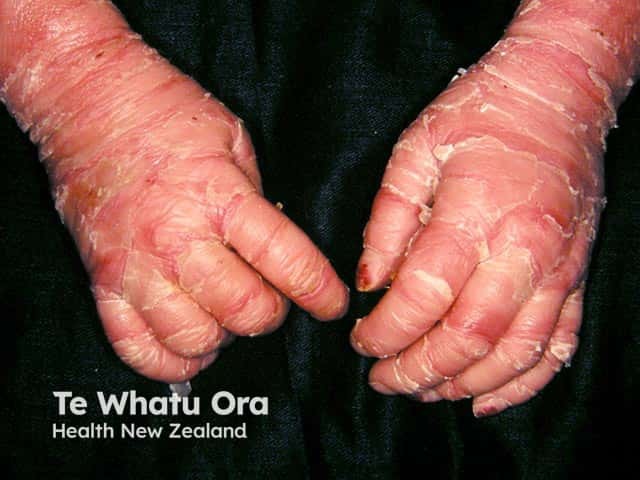
Peeling and redness on the hands due to bullous ichthyosifrom erythroderma (KI-patient2)
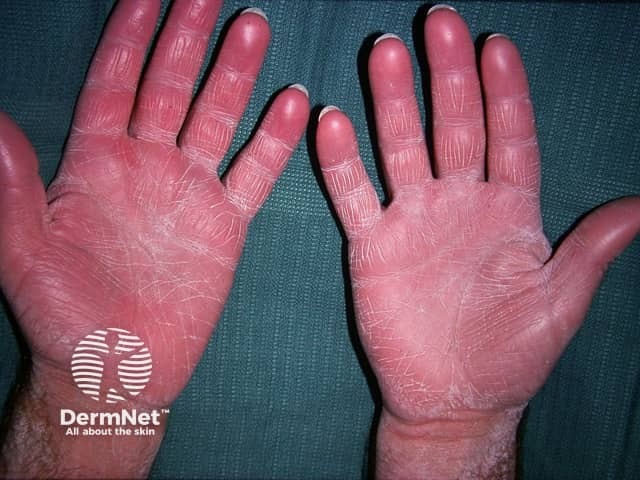
Acquired ichthyosis
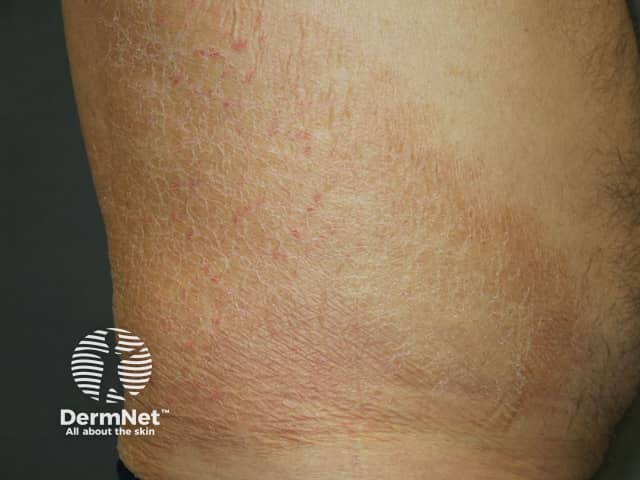
Acquired ichthyosis
See more images of ichthyosis.
Ichthyosis is a component of several rare congenital syndromes. These include:
Ichthyosis is usually a clinical diagnosis. Genetic testing is available in some centres and prenatal testing may be available for X-linked ichthyosis.
Recessive X-linked ichthyosis is confirmed by absent steroid sulphatase in fibroblasts and elevated plasma cholesterol sulfate levels.
Biopsy reveals:
People who have very severe ichthyosis may need to spend several hours each day caring for their skin. The problems they encounter may include:
There is no cure for the inherited forms of ichthyosis. The following may be useful:
Studies are on-going to evaluate the effect of monoclonal antibodies targeting the Th17 immune pathways.
The most severe forms of ichthyosis may threaten the life of an affected newborn, but most people with ichthyosis have a normal lifespan.
Inherited forms of ichthyosis persist lifelong.
Acquired ichthyosis may resolve if the underlying cause can be effectively treated or a causative drug discontinued.